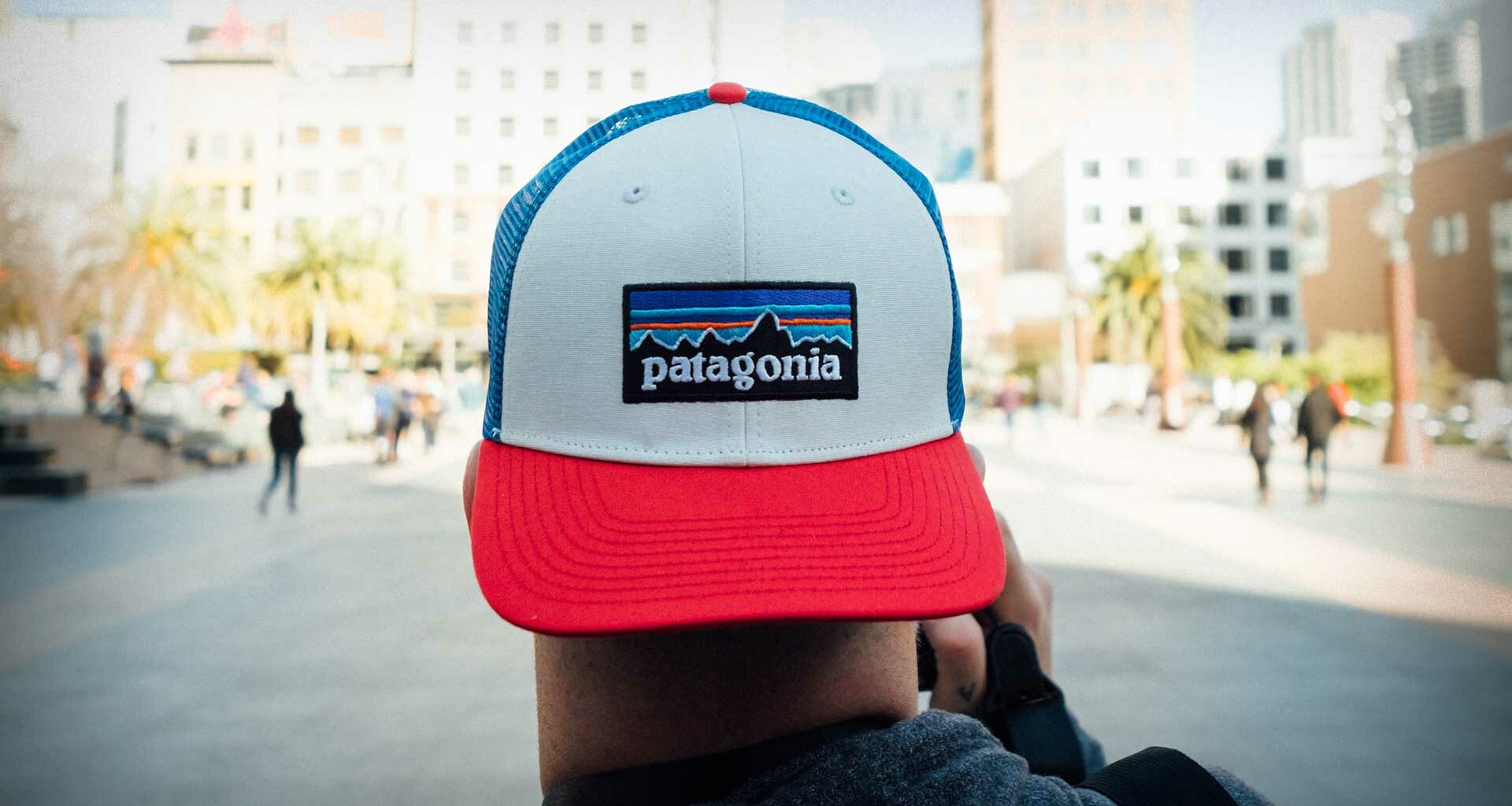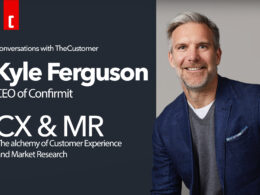As a marketer, how important is brand authenticity to consumers?
TLDR:
Brand authenticity is a crucial factor in influencing consumer behavior. Consumers today have access to more information about brands than ever before, and they are becoming increasingly savvy about what they expect from the brands they interact with.
“Authenticity is the alignment of head, mouth, heart, and feet – thinking, saying, feeling, and doing the same thing – consistently. This builds trust, and followers love leaders they can trust.”
– Simon Sinek
In recent years, there has been a growing trend among consumers towards brands that are seen as authentic and genuine. Authenticity is about being true to who you are as a brand, staying consistent with your values, and being transparent with your customers. Consumers are more likely to trust and engage with brands that are authentic, and they are more likely to become loyal customers.
Research has shown that consumers are willing to pay more for products and services from brands that are perceived as authentic. According to a study by Cohn & Wolfe, 91% of consumers worldwide said they are willing to reward a brand for its authenticity by recommending it to others, and 62% said they would buy from a brand they perceive as authentic, even if it’s not the cheapest option.
In addition to driving consumer behavior, brand authenticity can also help brands differentiate themselves from competitors. In today’s crowded marketplace, having a strong and authentic brand identity can help a company stand out and build a loyal customer base.
The take-away:
Brand authenticity is a critical factor in building a successful brand and engaging with consumers. Brands that prioritize authenticity in their messaging and actions are more likely to create meaningful connections with their customers and drive long-term growth.
How much weight or influence does brand authenticity hold with different age groups, eg, baby boomers, millennials, Gen-Z & Get-X?
Baby Boomers, who were born between 1946 and 1964, tend to place a high value on trust and reliability. They are more likely to stick with brands they know and trust, and they value consistency in a brand’s messaging and actions. For this generation, authenticity means being transparent and delivering on promises.
Millennials, who were born between 1981 and 1996, are a highly engaged and socially conscious group. They value authenticity in brands that align with their values, and they are more likely to support companies that demonstrate a commitment to social responsibility and sustainability. Millennials are also more likely to engage with brands that offer personalized experiences and connect with them on a more personal level.
“Being transparent about your social impact can be scary, but it also creates trust with your customers. And ultimately, that’s what drives brand loyalty.”
– Blake Mycoskie, founder of TOMS Shoes
Generation Z, born between 1997 and 2012, has grown up in the digital age and is highly skeptical of traditional advertising. They value authenticity in brands that are genuine and transparent, and they are more likely to trust brands that engage with them in a more authentic and personal way. Gen Z consumers also value brands that reflect their diverse backgrounds and are inclusive in their messaging and actions.
Gen X, born between 1965 and 1980, values authenticity in brands that offer high-quality products and services. They are more likely to do research before making a purchase and are willing to pay more for products and services that are perceived as authentic. Gen X consumers also value brands that offer personalized experiences and connect with them on an emotional level.
The take-away:
While the specific aspects of authenticity that are valued by different generations may vary, brand authenticity is important to consumers across all age groups. Brands that prioritize authenticity in their messaging and actions are more likely to build trust and engage with consumers of all ages.
Brand activism takes it a few steps further.
Brand activism refers to a company or brand taking a public stance on social or political issues that go beyond its core business interests. Well-known examples of brand activism include:
- Nike: In 2018, Nike featured Colin Kaepernick, the former NFL quarterback who protested police brutality by kneeling during the national anthem, in an ad campaign. The move sparked controversy, with some consumers calling for a boycott of the brand, but it also won praise from others who appreciated Nike’s support of Kaepernick’s message.
- Ben & Jerry’s: The ice cream company has a long history of taking a stand on social and political issues. They have supported causes such as marriage equality, Black Lives Matter, and climate change through various initiatives, such as renaming an ice cream flavor to “I Dough, I Dough” in support of marriage equality.
- Patagonia: The outdoor clothing company has been vocal in its support of environmental causes, such as the protection of public lands and fighting climate change. They have also donated millions of dollars to environmental organizations and encourage their customers to take action on environmental issues.
- Airbnb: In response to the Trump administration’s travel ban on citizens of several Muslim-majority countries, Airbnb offered free housing to refugees and those affected by the ban. They also launched a campaign called “We Accept,” which emphasized the company’s commitment to inclusion and diversity.
- Coca-Cola: The beverage company launched a campaign called “It’s Beautiful” during the 2014 Super Bowl that featured people of different ethnicities and cultures singing “America the Beautiful” in various languages. The ad sparked both praise and criticism, but it showcased the company’s support of diversity and inclusion.
The take-away:
Brand activism is a way for companies to connect with consumers on a deeper level and demonstrate their commitment to social and political issues that are important to their customers. However, it’s important for brands to approach activism carefully and authentically, as consumers can be quick to detect insincerity or opportunism.
Brand activism isn’t easy.
While brand activism can be a powerful tool for building brand loyalty and connecting with consumers, it can also backfire and have negative consequences. Recent history is littered examples of instances where brand activism has failed or had an adverse impact on perception and sales:
- Pepsi: In 2017, Pepsi released a controversial ad featuring Kendall Jenner that depicted her solving social justice issues with a can of Pepsi. The ad was widely criticized for trivializing social justice issues and sparked backlash on social media. Pepsi ultimately pulled the ad and apologized.
- Gillette: In 2019, Gillette released an ad campaign that challenged toxic masculinity and encouraged men to hold each other accountable for their actions. The ad sparked a backlash from some consumers who felt that the ad was condescending and that the brand was alienating its core audience. Some consumers even called for a boycott of the brand.
- Chick-fil-A: The fast-food chain has faced criticism for its support of anti-LGBTQ+ causes, which has led to boycotts and negative publicity. The company’s stance on social issues has hurt its reputation among some consumers, particularly younger generations who are more likely to support LGBTQ+ rights.
- Uber: In 2017, Uber faced a backlash after it was perceived as trying to profit from a taxi strike against President Trump’s travel ban. The company turned off surge pricing during the strike, which was seen as a way to undermine the strike and profit from the controversy. The incident led to a #DeleteUber campaign on social media, and the company’s CEO eventually resigned.
The take-away:
Brand activism can be a double-edged sword, and companies need to approach it carefully and thoughtfully. When brands take a public stance on social or political issues, they risk alienating some consumers who disagree with their position. Brands also need to ensure that their activism is authentic and aligned with their core values, or they risk being accused of opportunism or insincerity.
And then there’s the matter of “greenwashing”.
This term is used to describe companies that try to portray themselves as environmentally friendly without actually making meaningful changes to their business practices.
Some examples of brands that have been associated with greenwashing include:
- Volkswagen: In 2015, Volkswagen was caught cheating on emissions tests by installing software that allowed its diesel vehicles to emit more pollutants than legally allowed. The company had marketed its diesel engines as a more eco-friendly alternative to gasoline engines, but the scandal revealed that the company had been misleading consumers and regulators.
- H&M: The fast-fashion retailer has faced criticism for its “Conscious Collection,” which is marketed as a sustainable and eco-friendly clothing line. However, critics argue that the company’s overall business model, which relies on fast fashion and encourages consumers to buy and discard clothing quickly, is not sustainable and contradicts the eco-friendly message of the Conscious Collection.
- Nestle: The food and beverage company has faced criticism for its use of plastic packaging, which is not biodegradable and contributes to plastic pollution. Despite its marketing campaigns promoting its commitment to sustainability, Nestle has been accused of not doing enough to address its environmental impact.
- ExxonMobil: The oil and gas company has faced criticism for its advertising campaigns that promote its commitment to addressing climate change while continuing to invest in fossil fuels. Critics argue that the company’s core business model is incompatible with addressing climate change and that its marketing campaigns are a form of greenwashing.
The take-away:
Greenwashing can be harmful to consumers, as it can lead them to believe that they are making environmentally conscious choices when they are not. It can also undermine genuine efforts by companies to become more sustainable and environmentally responsible.
How can brands sensibly navigate shifting consumer concerns and preferences when it comes to brand authenticity and brand activism?
Consider the following strategies:
- Listen to consumers
It is important for brands to understand their customers’ values and priorities, and to stay up-to-date with changes in consumer sentiment. Brands should regularly engage with their customers through surveys, focus groups, and social media monitoring to stay informed about what their customers care about.- Proof Point: A survey conducted by Salesforce found that 84% of customers say that being treated like a person, not a number, is very important to winning their business. Additionally, a study by Accenture found that 83% of consumers want brands to be transparent about where their products come from and how they are made.
- Proof Point: A survey conducted by Salesforce found that 84% of customers say that being treated like a person, not a number, is very important to winning their business. Additionally, a study by Accenture found that 83% of consumers want brands to be transparent about where their products come from and how they are made.
- Be authentic
Brands should ensure that their activism is aligned with their core values and business practices. Consumers can easily spot insincere attempts at brand activism, and brands that are seen as inauthentic risk damaging their reputation and losing customer trust.- Proof Point: A study by Cone Communications found that 87% of consumers will purchase a product because a company advocated for an issue they cared about, while 76% will refuse to purchase a product if they found out a company supported an issue contrary to their beliefs.
- Proof Point: A study by Cone Communications found that 87% of consumers will purchase a product because a company advocated for an issue they cared about, while 76% will refuse to purchase a product if they found out a company supported an issue contrary to their beliefs.
- Take a stand
While it can be tempting for brands to try to remain neutral on controversial issues, taking a stand can help to build stronger connections with customers who share the same values. However, brands should carefully consider the potential risks and rewards of taking a stand on a particular issue, and be prepared to stand behind their position.- Proof Point: A survey by Edelman found that 64% of consumers worldwide are belief-driven buyers, meaning they choose, switch, avoid, or boycott a brand based on its stand on societal issues. Additionally, a study by Accenture found that 63% of consumers want companies to take a stance on current and broadly relevant issues like sustainability, transparency, or fair employment practices.
- Proof Point: A survey by Edelman found that 64% of consumers worldwide are belief-driven buyers, meaning they choose, switch, avoid, or boycott a brand based on its stand on societal issues. Additionally, a study by Accenture found that 63% of consumers want companies to take a stance on current and broadly relevant issues like sustainability, transparency, or fair employment practices.
- Be transparent
Brands should be transparent about their business practices and the impact they have on people and the environment. This can help to build trust with customers and demonstrate a commitment to being a responsible and sustainable business.- Proof Point: A survey by Label Insight found that 94% of consumers are likely to be loyal to a brand that offers complete transparency, and 73% are willing to pay more for a product that offers complete transparency.
- Proof Point: A survey by Label Insight found that 94% of consumers are likely to be loyal to a brand that offers complete transparency, and 73% are willing to pay more for a product that offers complete transparency.
- Focus on long-term impact
Brands should focus on making meaningful, long-term changes to their business practices that align with their values and address the concerns of their customers. Consumers are increasingly looking for brands that are committed to making a positive impact on society and the environment, and brands that can demonstrate real progress in these areas are likely to be more successful in the long run.- Proof Point: A study by Nielsen found that 73% of global consumers say they would definitely or probably change their consumption habits to reduce their impact on the environment, while a report by Unilever found that its sustainable living brands grew 46% faster than the rest of its business in 2019.
- Proof Point: A study by Nielsen found that 73% of global consumers say they would definitely or probably change their consumption habits to reduce their impact on the environment, while a report by Unilever found that its sustainable living brands grew 46% faster than the rest of its business in 2019.
The take-away:
By following these strategies, brands can build stronger relationships with their customers, demonstrate their commitment to making a positive impact, and navigate shifting consumer concerns and preferences regarding brand authenticity and activism.
Photo by Tim Foster on Unsplash












